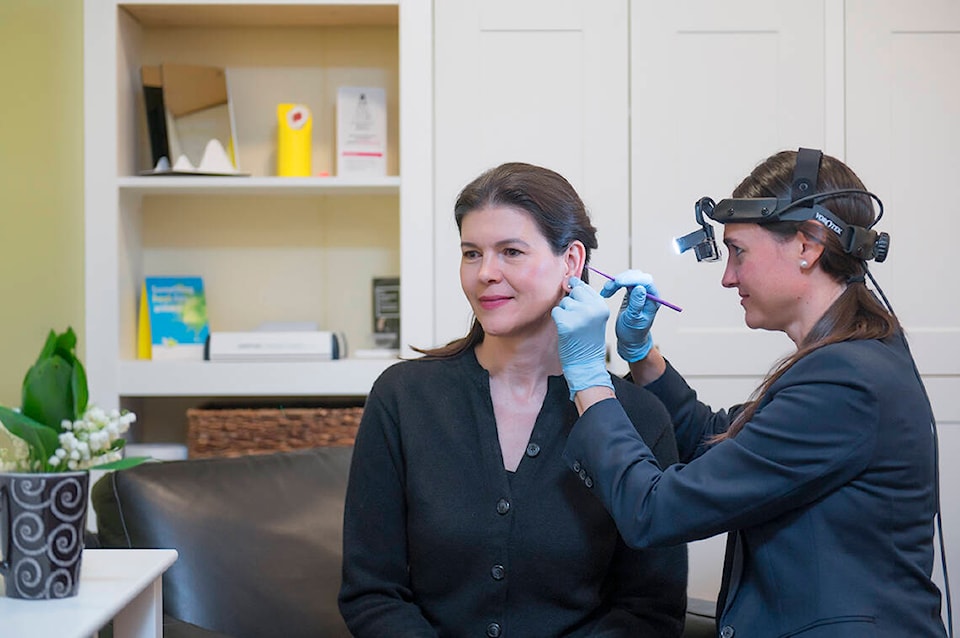Last month in the Nanaimo News Bulletin, Hanan Merrill from Nanaimo Hearing Clinic explained the conditions that make it so difficult to hear speech in a restaurant or big family gathering with lots of background noise.
“Many people wonder why noise cancelling headphones can function so effectively, while hearing aids struggle. But the two scenarios aren’t directly comparable,” he says.
Noise cancelling headphones have two ‘pipes’ of sound: they can easily turn of the ‘background noise pipe’ while keeping the ‘movie or music pipe’ on so you keep hearing exactly what you want to hear. If you’re wearing hearing aids at a noisy party, both speech and background noise are mixed together in a single ‘pipe’ of sound, so it’s a lot trickier to separate desired sounds.
READ MORE: Understanding speech, background noise, and how hearing works
3 ways to improve the sound in your hearing aids
1. Get the best hearing aid you can afford
“Higher-level hearing aids do have better processing systems for focusing on speech and minimizing background noise. Top-of-the-line hearing aids with lots of audio channels and good directional microphone technology are really good at picking up the sounds in the direction where you’re looking, allowing other noises to fade into the background,” Hanan says.
High-level hearing aids claim to offer a 360 degree perception of sound with lightning fast processing speeds. Hanan says that can work really well for some people, but not everyone’s brains and hearing is suited to the technology.
2. Customize your hearing aid’s programming
High-level hearing aids try to balance a wide range of audio inputs automatically, but sometimes that programming doesn’t offer the sound picture that works for your specific needs. That’s where manual programming comes in, with the help of a hearing aid professional.
“I can adjust your hearing aid programming to a forward directional focus, so it’s easier to hear the speech of a person in front of you,” Hanan says.
Some of Hanan’s other programming tricks? Toning down the bass, since that’s often where background noise originates. Pumping up the high frequency sound and making it more linear, to create a cleaner signal and clearer speech. A hearing professional can fine-tune these adjustments to work for your specific needs.
3. Switch to closed fittings
Hearing loss isn’t always across-the-board — often people experience treble hearing loss, but can still hear bass pitches just fine. So hearing aid manufacturers invented a device with a slender insert that doesn’t cover the entire ear canal; it allows the wearer to continue hearing bass sounds naturally, while enhancing treble sounds.
“The problem with this style of hearing aid is that it doesn’t control the whole ‘sound picture,’ it only controls the treble. So if you’re finding background noise distracting, often switching to a closed fitting or partially closed fitting will help,” Hanan says.
Consult with a hearing professional for a custom solution
None of these methods will work perfectly for all people in all situations, and it takes some trial and error (and expert guidance) to figure out which strategy will make the biggest difference for your listening needs.
Make an appointment at Nanaimo Hearing Clinic today. Call 250-585-4100 or get in touch online at nanaimohearingclinic.com/contact. Find the clinic at 501-5800 Turner Rd in Cactus Club Plaza.
